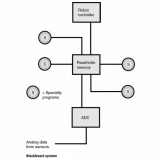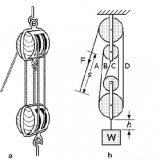LASER DATA TRANSMISSION – 21081
Laser beams can be modulated to convey information, in the same way as radio waves. Laser data transmission allows a few broadband signals, or many narrowband signals, to be sent over a single beam of light. This method of data transmission is used in some mobile robotic systems. A laser-communications transmitter has a signal processor or amplifier, a modulator, and laser (upper part of illustration). The receiver uses a photocell, an amplifier, and a signal processor (lower part of illustration). Any form of data can be sent, including voice, television, and digital signals. Laser communications systems can be either line-of-sight or fiber-optic.
In a line-of-sight system, the beam travels in a straight line through space or clear air. Because laser beams remain narrow for long distances, long-range communication is possible. However, this scheme does not work well through clouds, fog, rain, snow, or other obstructions. The alignment of the laser and the photodetector must be precise.
In a fiber-optic laser-communications system, the beam is guided through a glass or plastic filament. This is similar to wire or cable communications, but with far more versatility. Optical systems are not susceptible to the effects of electromagnetic interference (EMI), as are some wire and cable networks. Fiber-optic systems lend themselves well to robot control, especially in hostile environments such as the deep sea.




